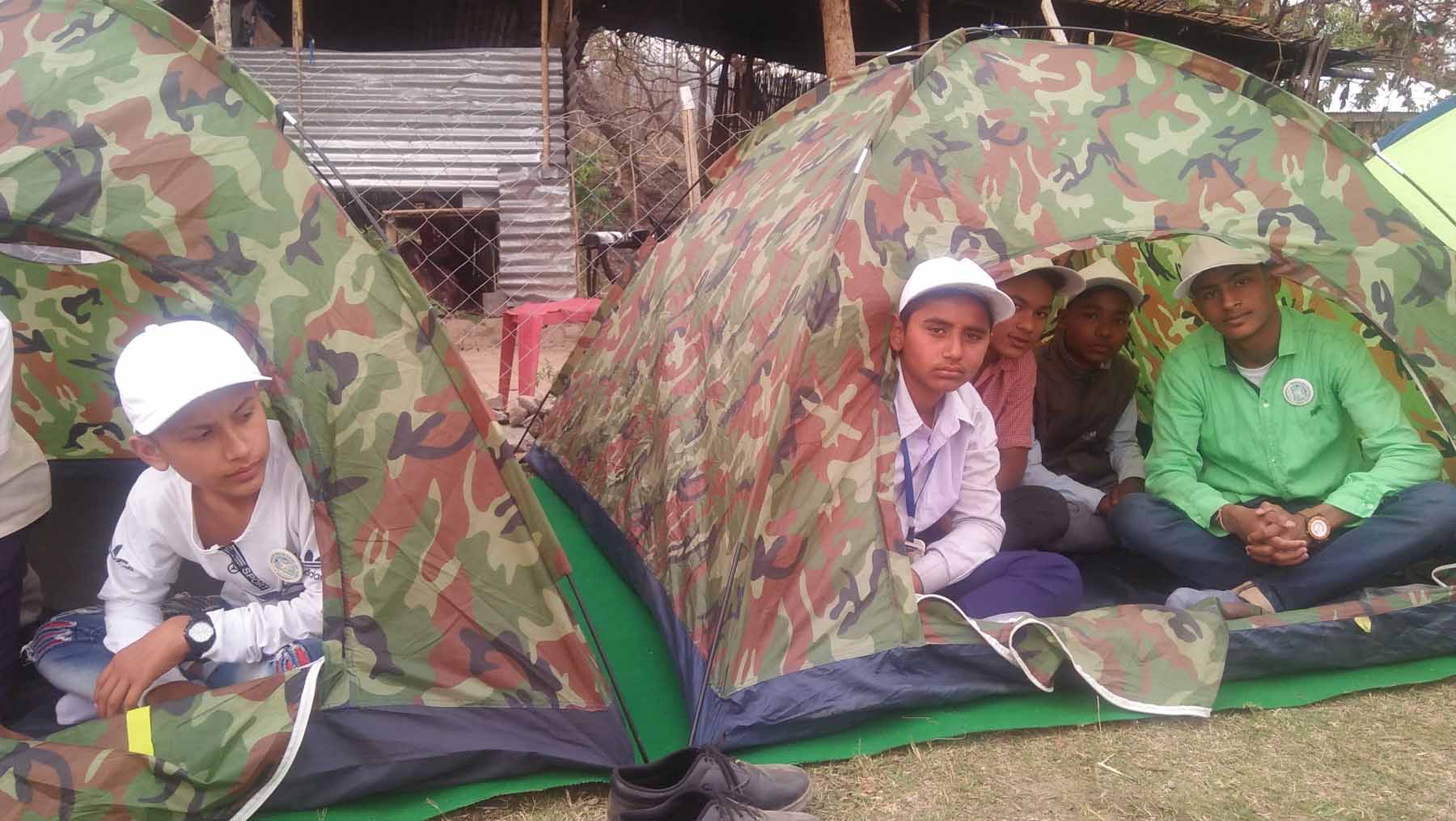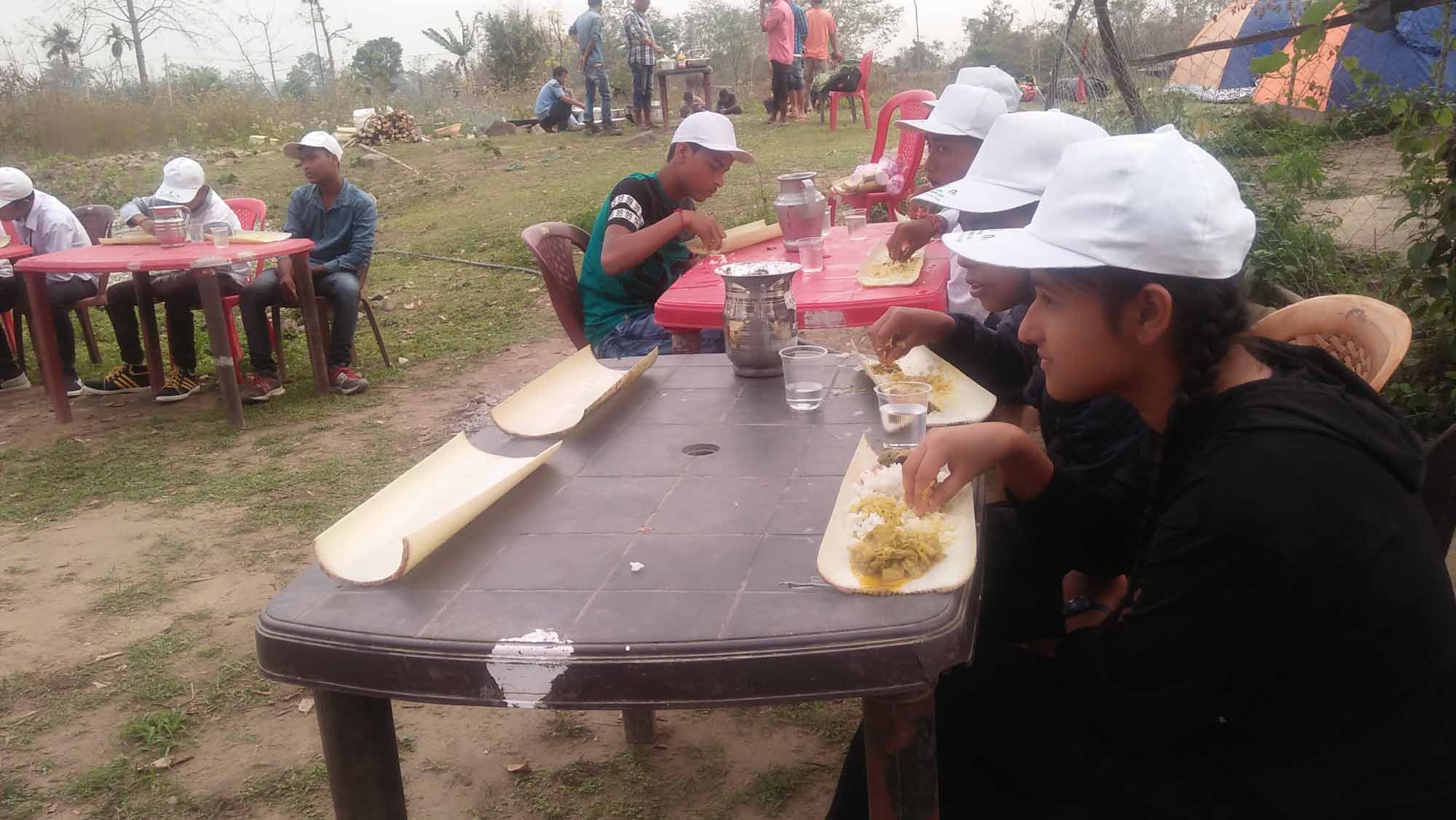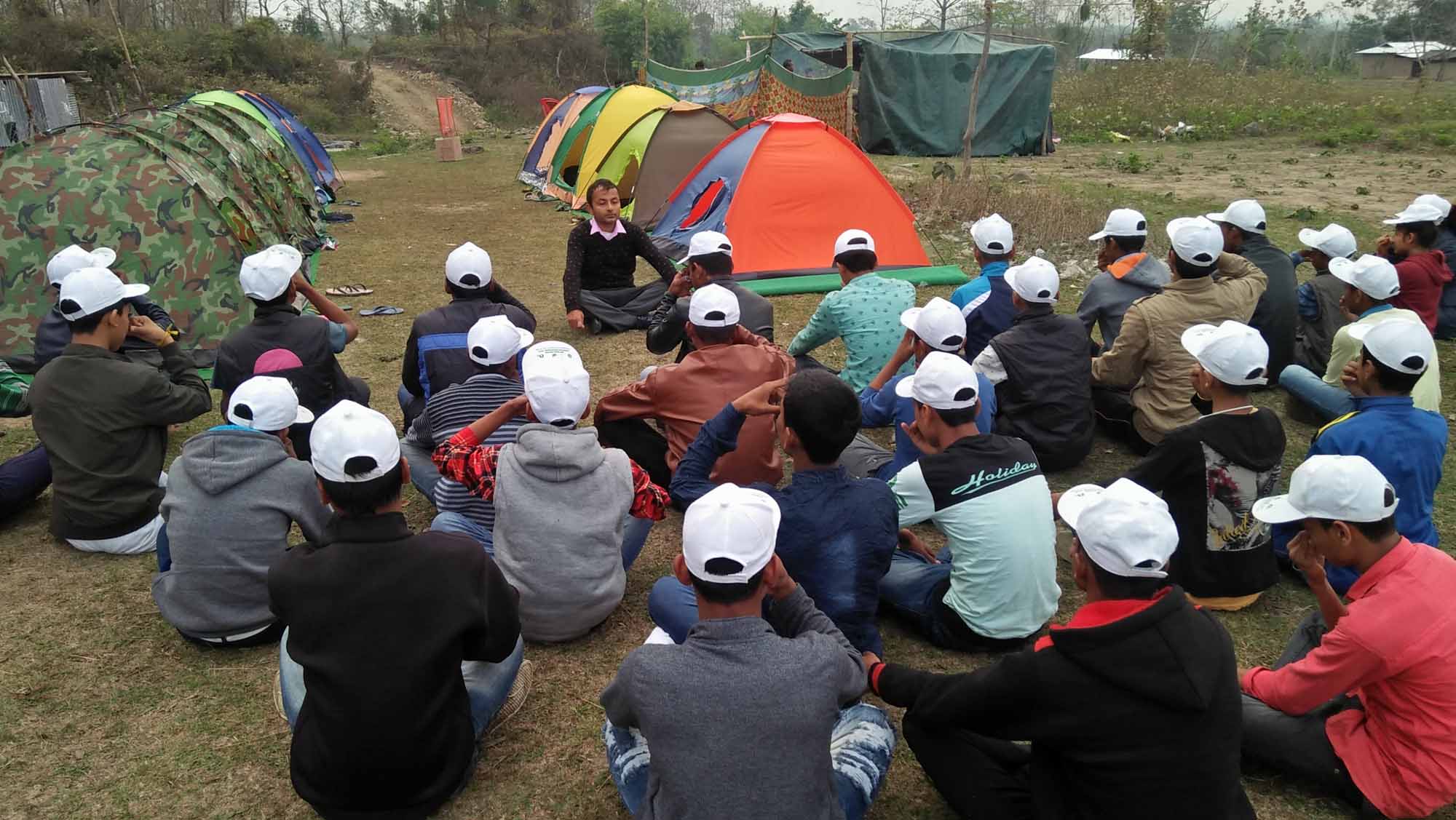
It was the second week of March 2019 when 30 students of ten schools gathered at the eco-camp of Manas Sousi Khongkhor Eco-Tourism Society, a conservation NGO working in Dihira Proposed Reserved Forest under Batabari Range of Baksa Forest Division in the Indo-Bhutan border areas of Assam . The students had gathered there to participate in a nature camping programme organised by GETF , the district nodal agency for eco clubs under Assam Science Environment and Technology Council in keeping with the National Nature Camping Programme of the Ministry of Environment ,Forest and Climate Change-Govt. of India .Students of 10 schools were picked up by the organisers to attend the nature camping programme .In the backdrop of the lush green forest and blue hills stood the camping site. The black topped road finished at Bhutankhuti and the vehicle moved on slightly bumpy river and forest road. Ten igloo shaped canvas tents were placed in an open field in front of a bamboo cottage. The colourful tents of blue, orange, purple, green and yellow colour added to the panoramic view of the place. Students were excited to enter into the tents. Boy students put their bags inside the tents while two girls along with J. Pathak, a lady member of GETF were accommodated in the bamboo cottage on the slope of a hill. The boy students were under the guidance of Debojit Bora, co-ordinator of the district nodal agency and a member.
The day was bright with a pleasantly warm sunshine. A cool breeze continuously blowing from the forest along with melodious chirps of birds filled the air with intoxication .White clouds were loitering across the sky and tantalising the hill tops to touch them .Tender drumsticks were hanging from the trees nearby some huts which some encroachers had built in the outskirt of the camp. After a light refreshment a get together programme was held in front of the cottage where the students were introduced to each other. With a note of suspense D. Bora, the coordinator told the participants that he would not explain the objective of the nature camping programme but they themselves will understand through various activities and sessions and they would have to share it on the concluding day of the programme. Bijoy Choudhury, the chairman of the conservation NGO gave an introduction of the conservation NGO and Dihira Proposed Reserve Forest .He explained how some encroachers had destroyed the forest and cleared a large area of forest for cultivation and how the conservation NGO had to convince them for stepping back to some distance. The forest visible in the backdrop was the result of massive reforestation programme carried by the conservation NGO with community participation .The reforestation programme helped the naturally grown plants, herbs and creepers to boost the density of the plantation. With it the natural environment was revived where wild animals, birds, insects came back. The children listened to the speech as if they were listening a grandma tale.

Then, it was lunchtime. Rice and curry was served on clean banana tree barks. Actually it had long been a practice to eat in community feasts on banana tree barks as people in South India eat on leaves of banana and other trees. Traditional Bodo tribal curry was served which the students enjoyed a lot .It was a great enjoyment eating together in open air amidst birds’ chirping .The water collected in a tank through a pipe from a distant hilly stream was very refreshing.
The Sun was slanting towards the west. The hills in the west wore a mystic look. Then, Debojit Bora announced that we shall go inside the forest for some time. Everyone stood in queue and started following the guided into the forest on a zigzag trail. After a walk of about twenty minutes the students was asked to wait in a glade like area. The place was high ,so some huts could be seen from the place to the east. The sound of clucking of hens could be heard in that direction. Everyone was asked to observe the things around. Mrs. J. Pathak asked them to sit on the ground silently with their eyes closed .They were given directions to listen to the sounds around without the intent of listening. Time passed on slowly. The forest was full of chirpings of birds, sound insects and small animals .The leaves of trees were fluttering as cool wind was blowing from the east. After fifteen minutes students opened there eyes but they were not ready to talk, as if in open eye meditation. Everyone was glowing with joy. Later, on their way back to the camp three students who came from the school of neighbouring areas said that they used to come to the forest sometimes but had never experienced the joy of silence sitting inside the forest.
Back in the camp tea and snacks was ready. It was followed by each and every student’s experience sharing session on their jungle walk and silent sitting. After dinner the students engaged in cracking jokes and went to their tents and camp for rest. In each tent there were students from different schools in lieu of their school mates but it made no difference at all. They kept talking and singing till late night.

The next morning everyone gathered in the open place for yoga and meditation. The experience of yoga and meditation in its place of origin was energising. After breakfast Bijoy Choudhury led the group through the partially dry river bed where he showed the pugmarks of clouded leopard, Asiatic bear, civet cat and various other animals. He also introduced the students with various wild trees, plants, creepers, orchids, pebbles and rocks. He also explained the food habit of the fauna of Dihira Proposed Reserve Forest which forms the buffer zone of Manas Tiger Project. At places students had to cross gigantic rocks covered with slippery moss and many of them slipped but of course without any injury. Students picked up ripe elephant apples from the river bed to carry home for curry. The jungle trail was full of invigorating lifetime first hand experiences for the students which would inspire them to be ecologically sensitive.